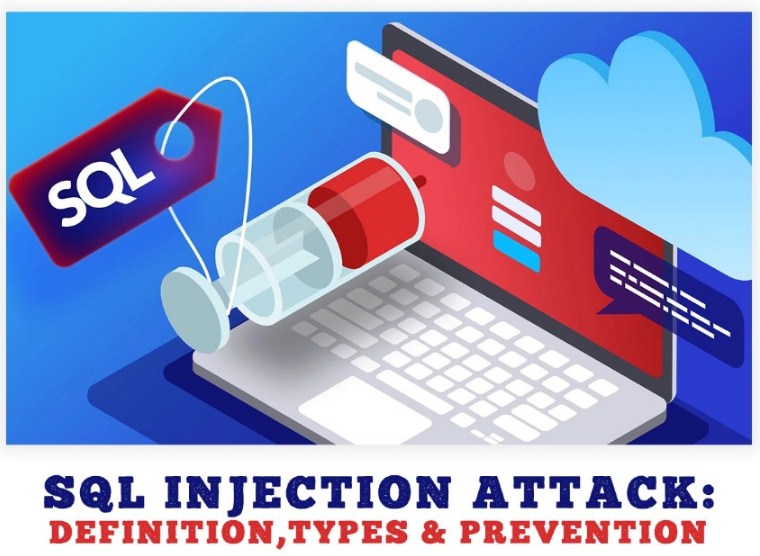How to Prevent SQL Injection and Other Database Attacks
Published on July 2, 2025

How to Prevent SQL Injection and Other Database Attacks
In today’s digital world, databases are the backbone of applications, storing everything from user credentials to financial transactions. However, if not properly secured, databases become an easy target for cybercriminals. One of the most common and dangerous attacks is SQL Injection (SQLi), which allows hackers to manipulate SQL queries and gain unauthorized access to sensitive information.
In this guide, we’ll explore SQL injection, its consequences, and the best strategies to prevent SQL injection and other database attacks to keep your system secure.
What is SQL Injection?
SQL Injection is a web security vulnerability that enables attackers to interfere with an application’s database queries. By inserting malicious SQL code into input fields, hackers can manipulate the database to:
Retrieve unauthorized data (e.g., passwords, credit card details, personal records)
Modify or delete records
Execute administrative operations
Bypass authentication systems
Example of SQL Injection
Consider a simple login query:
SELECT * FROM users WHERE username = '$username' AND password = '$password';
If an attacker inputs the following in the username field:
' OR '1'='1
The final query becomes:
SELECT * FROM users WHERE username = '' OR '1'='1' AND password = '$password';
Since '1'='1' is always true, the attacker can gain access without knowing any real credentials.
Consequences of SQL Injection Attacks
Data Theft: Attackers can access confidential data such as user emails, addresses, and passwords.
Data Loss: Malicious queries can delete entire databases.
Unauthorized Access: Attackers can log in as an administrator.
Financial Damage: Companies can suffer huge financial losses due to data breaches and legal penalties.
Reputation Damage: Loss of customer trust and business credibility.
How to Prevent SQL Injection
Preventing SQL injection is crucial for securing your database. Here are the best practices:
1. Use Prepared Statements (Parameterized Queries)
Instead of embedding user input directly into SQL queries, use prepared statements with bound parameters:
$stmt = $conn->prepare("SELECT * FROM users WHERE username = ? AND password = ?");
$stmt->bind_param("ss", $username, $password);
$stmt->execute();
This ensures user input is treated as data, not as part of the SQL query.
2. Use Stored Procedures
Stored procedures execute pre-defined SQL code in the database, reducing the risk of SQL injection:
CREATE PROCEDURE GetUser(IN user VARCHAR(255), IN pass VARCHAR(255))
BEGIN
SELECT * FROM users WHERE username = user AND password = pass;
END;
Then, call it from your application code instead of writing inline SQL queries.
3. Use Object-Relational Mapping (ORM) Frameworks
ORM frameworks like Eloquent (Laravel), Doctrine (Symfony), and Hibernate (Java) abstract database interactions, automatically preventing SQL injection.
4. Input Validation and Sanitization
Use strict validation rules for form fields (e.g., allow only alphanumeric characters in usernames).
Reject unexpected characters and patterns that resemble SQL syntax.
5. Restrict Database Privileges
Grant users only the necessary database permissions. For example:
Application users should have only SELECT, INSERT, and UPDATE privileges.
Admins should have DELETE privileges but only from a secure interface.
Avoid using root or admin accounts for database connections.
6. Use Web Application Firewalls (WAFs)
A WAF can detect and block SQL injection attempts by analyzing incoming requests for malicious patterns.
7. Enable Database Logging and Monitoring
Monitor database logs for unusual activities, such as:
Sudden spikes in queries
Unauthorized login attempts
Unexpected changes in database structure
8. Hide Database Error Messages
Displaying detailed error messages can expose database structure information. Use generic error messages like:
echo "Invalid username or password";
instead of displaying SQL errors.
9. Keep Software and Database Systems Updated
Regularly update:
Database management systems (MySQL, PostgreSQL, etc.)
Web frameworks (Laravel, Django, ASP.NET, etc.)
Web server software (Apache, Nginx, etc.)
10. Implement Multi-Factor Authentication (MFA)
Even if an attacker gains access to credentials through SQL injection, MFA can prevent them from logging in.
Other Common Database Attacks and How to Prevent Them
Apart from SQL injection, databases face other attacks such as:
1. Cross-Site Scripting (XSS)
Use HTML escaping (e.g., htmlspecialchars() in PHP)
Use Content Security Policy (CSP)
2. Cross-Site Request Forgery (CSRF)
Implement CSRF tokens in forms
Use secure cookies with HttpOnly and SameSite attributes
3. Denial-of-Service (DoS) Attacks
Limit database connections
Use rate limiting on APIs
Deploy cloud-based security solutions like Cloudflare
Conclusion
SQL injection and other database attacks pose a significant threat to applications and businesses. By following best security practices such as using prepared statements, input validation, limiting privileges, and keeping systems updated, you can effectively prevent such attacks. Cybersecurity is an ongoing process, so always stay informed about the latest threats and security measures.
By implementing these measures, you’ll not only protect your database but also enhance user trust and system reliability. Secure your applications today to avoid costly breaches in the future!
🚀 Looking For Experts?
Check out our hosting plans, domains, and Website design and development services for your next online project!
Visit SPYW3.com🆕 Latest Blogs
- How to Keep Your WordPress Website Safe from Hackers: A Comprehensive Guide
- Understanding OWASP’s Top 10 Security Risks for Websites: A Guide to Protecting Your Website
- How Hackers Exploit Weak Passwords and How to Strengthen Yours
- The Importance of Regular Website Security Audits: A Guide to Protecting Your Online Presence
- How to Protect Your Website from DDoS Attacks: A Comprehensive Guide
- Two-Factor Authentication (2FA): Strengthening Login Security for Your Website
- A Beginner’s Guide to Secure Web Development: Protecting Your Website from Day One
- What is Cross-Site Scripting (XSS) and How to Prevent It?
- Common Web Security Mistakes and How to Avoid Them: A Guide to Protecting Your Website